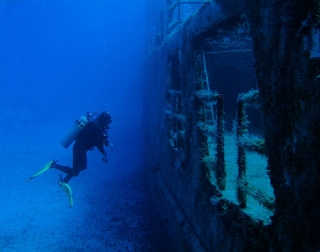The activity can vary in terms of environment (rivers, lakes, and seas) as well as the styles used. Essentially, sport fishing can be practised with four different types of equipment:
- Fly fishing,
- Spinning or casting (light tackle fishing),
- Trolling,
- Conventional fishing.
Due to its great elegance and uniqueness, we will now outline the characteristics of the method considered the most challenging in sport fishing.
Fishing Philosophy
This is the most demanding method, as it requires specific knowledge and considerable skill to be successfully applied.
The angler must understand the species and their habitats to apply the fundamentals of fly fishing. A fly fisher knows exactly what to do to fish successfully while maintaining the dignity of being a true gentleman in this battle between man and fish.
An angler who uses this fishing method is a conscious fisher, well aware of conservation and practising "catch and release" during a fishing trip—a method that varies depending on each country's regulations but involves releasing fish immediately after capture.

Despite the confrontation, a fly fisher is no longer just a hunter or fish killer but something more. The tools used, among other factors, include a specialised range of baits.
Fly Lures
The term "fly fishing" does not mean using real flies as hooks. The variety of hooks designed for "fly" fishing is extensive and sophisticated. These are small imitations of insects (both aquatic and terrestrial), mammals, nymphs, and even some fish species, varying in shape, size, colour, and hook type.
Fly fishing hooks come in two types: weighted depth hooks and floating ones that closely mimic insects or larvae, available in two varieties:
- "Wet fly", also known as streamer fishing, is easy to use and excellently imitates small fish or crustaceans swimming in deeper waters,

- "Dry fly", which stays on the surface, mimicking insects resting on the water. They are made with hair or feathers for better buoyancy and imitation,

- "Nymph fly", also called nymph fishing, these hooks sink to mid-water to imitate insect larvae. Their construction is slightly heavier, with added weight and fewer feathers.

But beyond specialised hooks, fly fishing is defined by other factors.
The Rod and Its Movement.
The casting technique is also unique in fly fishing. It largely depends on the type of line used and the angler's motion.
The rod is extremely lightweight and highly flexible, made from materials like bamboo, graphite, carbon fibre, or fibreglass. Typically 2 to 3.4 metres long, its key distinguishing feature is its line.
The line is defined by the filament's material, thickness, and weight. Usually synthetic or silk, its length and weight depend on the hook, which determines the type of fly fishing being used.
Beyond these specifications, the cast has its own uniqueness. A fly fishing cast consists of distinct steps, divided into three parts:
1- Casting the hook backward,
2- Pausing,
3- Casting forward with distance, without exceeding a certain angle.

It is a highly precise motion, resembling the flick of a whip, which—when mastered—exudes fluidity, elegance, and success. It is undoubtedly a complex gesture requiring proper instruction and extensive practice.
For all these reasons, fly fishing is regarded by enthusiasts as an "intellectual fishing" or even an art in itself. To many, it represents a purer and nobler form of fishing.












